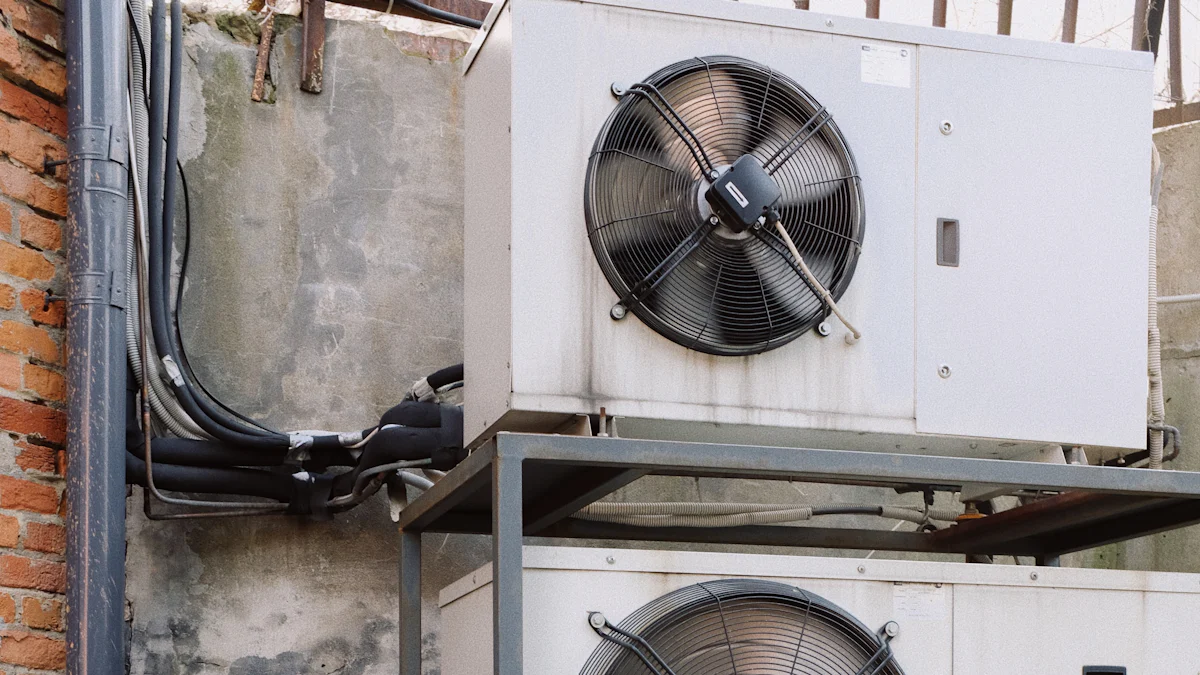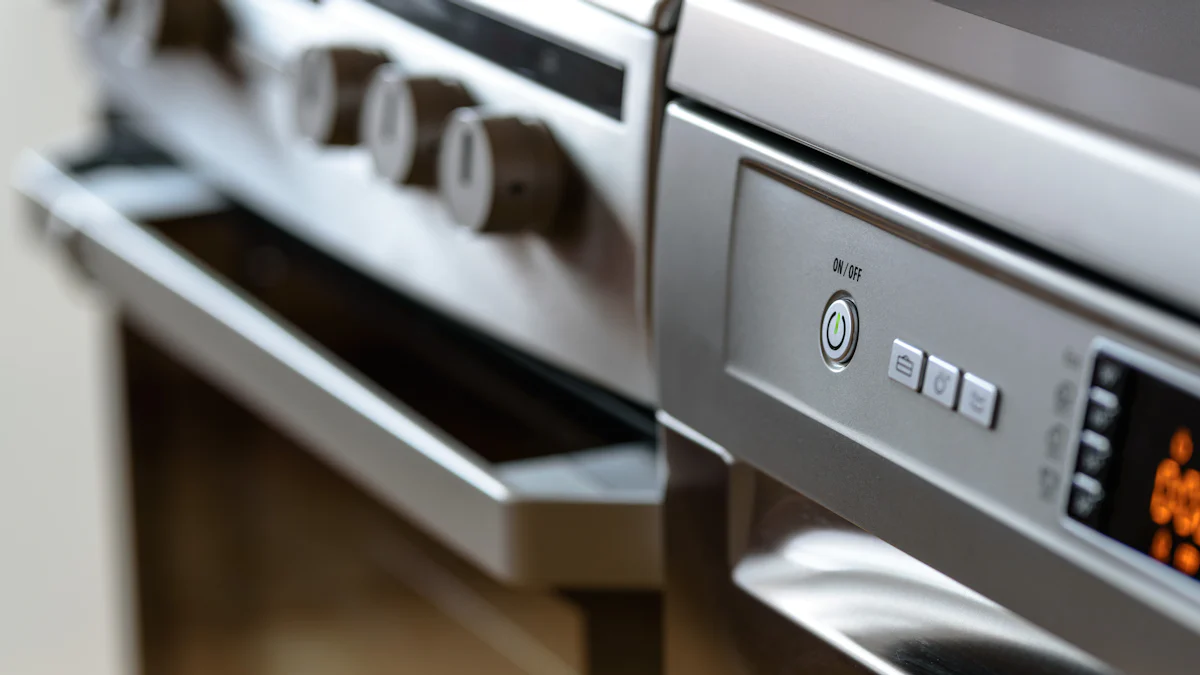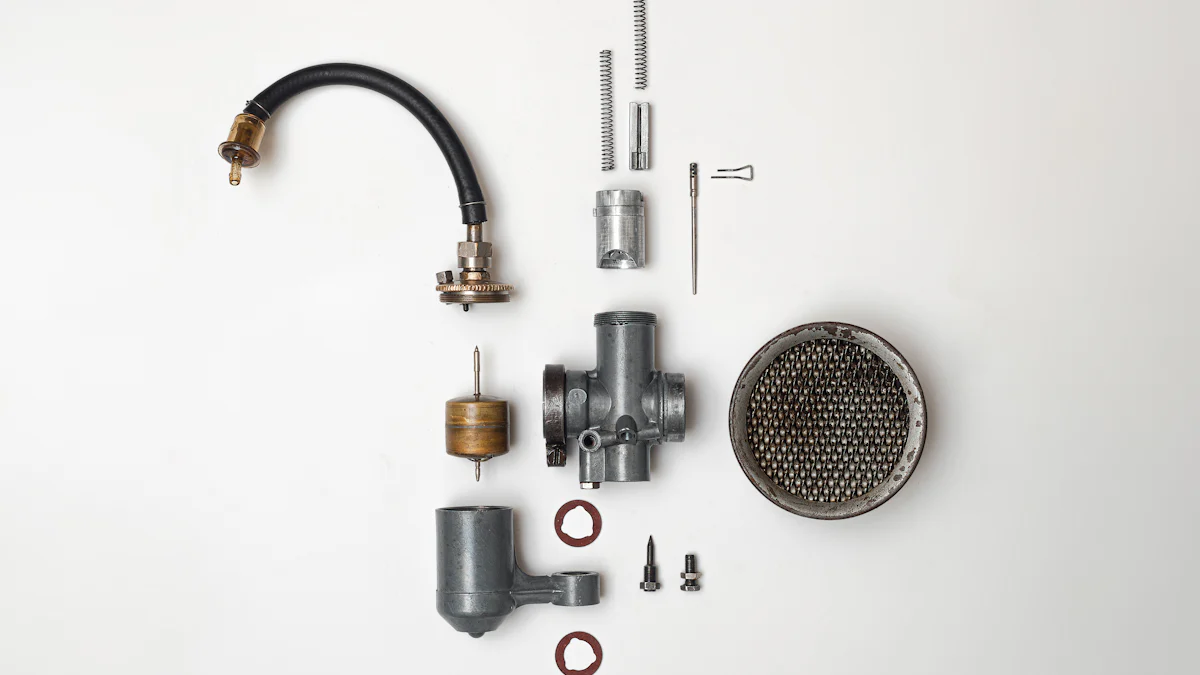Fridge Start Relay: Expert Tips for Easy Choice

A fridge start relay plays a vital role in keeping your refrigerator running smoothly. It connects the compressor and supplies the energy needed to start its operation. Each time the cooling cycle begins, the relay ensures the compressor starts up properly, maintaining the refrigerator’s temperature. Without it, the compressor cannot function effectively.
Choosing the right refrigerator start relay is essential for optimal performance. You need to focus on compatibility with your fridge model, the correct voltage, and high-quality materials. These factors ensure safe operation and extend the lifespan of your appliance.
Key Takeaways
A fridge start relay helps the compressor start and keeps it cool. Without it, your fridge won’t work right.
Pick a start relay that fits your fridge model. This keeps it safe and avoids compressor damage.
Check the relay’s voltage and amperage to match your fridge. This stops overheating and electrical problems.
Choose trusted brands like Supco or OEM parts for good quality. Better relays last longer and save on repairs.
Know the signs of a bad relay, like clicking sounds or no cooling. Fixing these fast can save you money.
Use your fridge manual to find the right relay specs. This avoids errors and keeps your fridge working well.
Keep an extra relay ready to replace a broken one fast. This stops food from spoiling and saves time.
If you’re unsure about the relay or how to install it, ask an expert. They’ll help you do it right and keep it reliable.
Why the Fridge Start Relay is Essential
The Role of the Refrigerator Start Relay
How it powers the compressor to start.
The refrigerator start relay acts as a critical switch for the compressor. It provides the initial surge of power needed to kickstart the compressor, which is essential for cooling the refrigerant. Without this component, the compressor cannot begin its operation, and the refrigerator will fail to maintain the desired temperature. The relay also ensures the compressor turns off when the cooling cycle ends, preventing unnecessary energy consumption.
In addition to powering the compressor, the relay serves as a safety device. It protects the compressor from overheating by interrupting the circuit if excessive current is drawn. This feature safeguards the refrigerator from potential electrical damage, ensuring its longevity and reliable performance.
What happens when the start relay malfunctions.
A malfunctioning fridge start relay disrupts the compressor's ability to start. This leads to inadequate cooling, causing the temperature inside the refrigerator to rise. You may notice food spoiling faster or ice melting in the freezer. Over time, the compressor may overheat due to repeated failed attempts to start, which can result in costly repairs or even complete compressor failure. Regular maintenance, such as cleaning and inspecting the relay, can help prevent these issues. Promptly replacing a faulty relay can also save you from more significant problems down the line.
Impact of a Faulty Start Relay
Symptoms of a failing relay.
Recognizing the signs of a failing refrigerator start relay can help you address the issue before it worsens. Common symptoms include:
Rising temperatures in the refrigerator and freezer compartments.
An audible clicking sound as the relay attempts to activate the compressor.
Absence of the usual humming sound from the compressor.
A rattling noise when you shake the relay, indicating internal damage.
If you notice any of these signs, it’s time to inspect or replace the relay to restore your refrigerator's functionality.
Long-term effects on the refrigerator's efficiency and lifespan.
A faulty start relay can significantly impact your refrigerator's efficiency and lifespan. When the compressor cannot start, the cooling process halts, leading to higher internal temperatures. This not only affects food preservation but also forces the compressor to work harder during repeated start attempts. Overheating becomes a serious risk, which can shorten the compressor's lifespan and lead to expensive repairs or replacements. Addressing relay issues promptly ensures your refrigerator operates efficiently and lasts longer.
Key Factors to Consider When Choosing a Refrigerator Start Relay

Compatibility with Your Refrigerator
Importance of matching the relay to your fridge model and compressor.
Choosing a compatible fridge start relay ensures your refrigerator operates efficiently. Each refrigerator model has specific requirements for its compressor, and the start relay must match these specifications. Using an incompatible relay can lead to improper functioning or even damage to the compressor. A well-matched relay guarantees smooth operation and prevents unnecessary strain on the appliance.
Compatibility also affects the safety of your refrigerator. An incorrect relay may cause electrical issues, such as overheating or short circuits. By selecting the right relay, you protect your appliance and avoid costly repairs.
How to find compatibility details using the fridge manual or compressor nameplate.
To determine compatibility, start by checking your refrigerator’s manual. The manual typically lists the part numbers and specifications for replacement components, including the start relay. If you don’t have the manual, look for the nameplate on the compressor. This plate provides essential details, such as the model number and electrical ratings. Use this information to find a relay that matches your refrigerator’s requirements.
You can also consult the manufacturer’s website or customer support for guidance. Providing them with your refrigerator’s model number will help them recommend the correct start relay.
Voltage and Amperage Ratings
Why these specifications are critical for safe operation.
Voltage and amperage ratings are crucial for the safe operation of your refrigerator. The start relay must handle the electrical load required by the compressor. If the relay’s ratings don’t match your refrigerator’s needs, it can lead to overheating, electrical failure, or even fire hazards. Proper ratings ensure the relay functions reliably and protects the appliance from damage.
Using a relay with incorrect ratings can also void your refrigerator’s warranty. Manufacturers often specify the required ratings to ensure safe and efficient performance.
How to check your refrigerator's electrical requirements.
To check your refrigerator’s electrical requirements, examine the compressor nameplate. This plate displays the voltage and amperage specifications needed for the start relay. Compare these values with the ratings of the relay you plan to purchase. Ensure the relay’s ratings meet or exceed the compressor’s requirements.
If you’re unsure, consult a technician or the refrigerator’s manufacturer. They can confirm the correct specifications and help you avoid potential issues.
Brand and Quality
Advantages of using trusted brands like Supco or OEM parts.
Opting for trusted brands like Supco or original equipment manufacturer (OEM) parts offers several benefits. These relays are designed to meet the exact specifications of your refrigerator, ensuring compatibility and reliability. High-quality relays from reputable brands last longer and perform better, reducing the risk of malfunctions.
Trusted brands also provide warranties and customer support, giving you peace of mind. Investing in a reliable relay saves you money in the long run by preventing frequent replacements and repairs.
Risks of using generic or low-quality relays.
Generic or low-quality relays may seem like a cost-effective option, but they come with significant risks. These relays often lack the durability and precision of branded parts. They may fail prematurely, causing your refrigerator to stop working. In some cases, low-quality relays can damage the compressor or other components, leading to expensive repairs.
Counterfeit relays are another concern. These products may not meet safety standards, increasing the risk of electrical hazards. Always prioritize quality over cost to ensure your refrigerator operates safely and efficiently.
Price vs. Performance
Balancing affordability with reliability.
When choosing a fridge start relay, you might feel tempted to go for the cheapest option. However, affordability should not come at the cost of reliability. A low-cost relay may save you money upfront, but it could lead to frequent failures or even damage to your refrigerator. This can result in higher repair costs or the need for a complete replacement.
Instead, aim for a balance between price and quality. Look for relays that meet your refrigerator’s specifications and come from reputable brands. These options often provide better durability and performance. While they may cost slightly more, they reduce the risk of malfunctions and extend the lifespan of your appliance.
Tip: Compare prices from multiple sources, but always prioritize quality over cost. A reliable relay is an investment in your refrigerator’s long-term performance.
When investing in a premium relay is worth it.
In some cases, spending extra on a premium start relay makes sense. High-end relays often feature advanced materials and designs that enhance their efficiency and lifespan. For example, premium relays may include better insulation or components that resist wear and tear. These features ensure consistent performance, even under heavy use.
You should consider a premium relay if your refrigerator operates in demanding conditions, such as high ambient temperatures or frequent power fluctuations. These conditions can strain standard relays, leading to premature failure. A premium option provides added protection and reliability in such scenarios.
Additionally, premium relays often come with extended warranties and customer support. This gives you peace of mind, knowing that you’re covered in case of any issues. While the initial cost may be higher, the long-term savings from reduced repairs and replacements make it a worthwhile investment.
Note: If your refrigerator is an older model or has a high-value compressor, a premium relay can help maintain its performance and prevent costly breakdowns.
By carefully evaluating your needs and the operating conditions of your refrigerator, you can decide whether a standard or premium relay is the right choice for you.
How to Identify and Diagnose a Faulty Refrigerator Start Relay

Common Signs of a Faulty Relay
Clicking or buzzing noises from the fridge.
One of the first signs of a bad refrigerator start relay is unusual sounds. You might hear a clicking or buzzing noise coming from the back of your refrigerator. These sounds occur when the relay repeatedly tries to activate the compressor but fails. If you notice this, it’s a clear signal to inspect the relay for problems.
Fridge not cooling or compressor not running.
Another common symptom is a lack of cooling. When the relay fails, the compressor cannot start, which stops the cooling process. You may find that your refrigerator feels warm inside, and the freezer might not freeze items properly. If the compressor isn’t running, it’s time to remove the relay for testing.
Testing the Start Relay
How to perform a continuity test with a multimeter.
Testing the refrigerator start relay with a multimeter is a straightforward process. Follow these steps to check for bad start relays:
Set your multimeter to the resistance (ohms) setting.
Place the probes into the "M" (Main) and "S" (Start) slots on the relay. Check for open resistance.
Flip the relay upside-down. The resistance should change to a reading between 0 and 1 ohms.
If the resistance doesn’t read "OL" (open loop) or 0-1 ohms, the relay is faulty and needs replacement.
This test helps confirm whether the relay is functioning or if it’s the cause of your refrigerator’s issues.
Checking for physical damage or rattling sounds.
Physical inspection can also reveal problems. Shake the relay gently. If you hear a rattling sound, the internal components are likely damaged. Additionally, look for burn marks, melted plastic, or other visible signs of wear. These indicate that the relay has failed and should be replaced immediately.
Replacing a Faulty Start Relay
Steps to safely remove and replace the relay.
Replacing a faulty start relay is a manageable task if you follow these steps:
Unplug the refrigerator to ensure safety.
Locate the relay, typically found on the side of the compressor.
Use a screwdriver or needle-nose pliers to disconnect the relay from the compressor.
Attach the new relay, ensuring it fits securely into place.
Plug the refrigerator back in and test its functionality.
This process restores your refrigerator’s cooling system and prevents further damage.
Precautions to ensure proper installation.
When replacing the relay, take these precautions to avoid mistakes:
Wear safety gloves and goggles to protect yourself from electrical sparks or sharp edges.
Prepare essential tools like a screwdriver, pliers, and a multimeter beforehand.
Double-check the relay’s compatibility with your refrigerator model.
These steps ensure a safe and successful installation, helping your refrigerator run smoothly again.
Expert Tips for Selecting the Right Fridge Start Relay
Consult the Refrigerator Manual
How to locate the correct part number and specifications.
Your refrigerator manual is the most reliable guide for finding the correct start relay. It contains detailed information about the parts compatible with your appliance. Look for the section that lists replacement components or technical specifications. You will often find the part number for the refrigerator start relay here. This number ensures you purchase the exact relay designed for your model.
If you no longer have the manual, check the compressor nameplate inside your fridge. This plate provides essential details like the compressor model and electrical ratings. Use this information to match the relay specifications. You can also visit the manufacturer’s website and search for your refrigerator model to access the manual online.
Why the manual is the most reliable resource.
The manual comes directly from the manufacturer, making it the most accurate source of information. It eliminates guesswork and ensures you select a relay that fits perfectly. Using the wrong relay can lead to electrical issues or damage to your appliance. By relying on the manual, you avoid these risks and maintain your refrigerator’s performance.
Seek Professional Advice
When to consult a technician for guidance.
Sometimes, identifying the right fridge start relay can feel overwhelming. If you’re unsure about compatibility or specifications, consult a professional technician. They have the expertise to guide you through the selection process. A technician can also inspect your refrigerator to confirm whether the start relay is the root cause of the problem.
You should also seek professional advice if your refrigerator has unique features or uses a high-end compressor. These cases often require specialized relays that may not be easy to identify on your own.
Benefits of professional installation for complex cases.
For complex cases, professional installation ensures the relay is installed correctly. Technicians follow safety protocols and use the right tools, reducing the risk of errors. They also test the relay after installation to confirm it works properly. This service saves you time and prevents potential damage to your appliance. While it may cost more upfront, professional help provides peace of mind and long-term reliability.
Buy from Trusted Sources
Recommended retailers and online stores for genuine parts.
Purchasing from trusted sources guarantees you receive a high-quality refrigerator start relay. Reliable options include:
Amazon
eBay
Specialized appliance parts stores
For specific products, consider options like the Estate Genuine Refrigerator Compressor Start Relay available at PartsDiscount.com. These retailers offer genuine parts that meet safety standards.
How to avoid counterfeit or substandard relays.
Counterfeit or low-quality relays can harm your refrigerator. To avoid these, always buy from reputable sellers. Check customer reviews and ratings before making a purchase. Look for certifications or warranties that indicate the product meets industry standards. Avoid deals that seem too good to be true, as they often involve substandard parts. By choosing trusted sources, you protect your appliance and ensure reliable performance.
Keep a Spare Start Relay
Why having a backup relay is a smart choice.
Keeping a spare refrigerator start relay on hand can save you from unnecessary stress and inconvenience. When your fridge’s start relay fails, the cooling system stops working. This can lead to spoiled food and costly repairs if you don’t act quickly. Having a backup relay allows you to replace the faulty one immediately, restoring your refrigerator’s functionality without delay.
A spare relay also helps you avoid the hassle of searching for a replacement during emergencies. Sometimes, finding the right relay for your refrigerator can take time, especially if you need a specific model. By keeping a backup, you eliminate the waiting period and ensure your fridge stays operational.
Tip: A spare relay is especially useful if you live in an area with limited access to appliance parts or experience frequent power fluctuations. These conditions can increase the likelihood of relay failure.
Additionally, having a backup relay can save you money in the long run. When you replace a failing relay promptly, you prevent further damage to the compressor and other components. This proactive approach reduces the risk of expensive repairs or the need for a new refrigerator.
Tips for storing a spare relay safely.
Proper storage of your spare start relay ensures it remains in good condition until you need it. Follow these tips to keep your backup relay safe and functional:
Choose a dry and cool location. Moisture and heat can damage the relay’s internal components. Store it in a place with low humidity and stable temperatures, such as a drawer or cabinet away from direct sunlight.
Use the original packaging. If possible, keep the relay in its original box. The packaging provides protection against dust, dirt, and accidental damage. If you don’t have the original box, wrap the relay in a clean, dry cloth or place it in a sealed plastic bag.
Label the relay clearly. Write down the refrigerator model and relay specifications on the packaging or a small tag. This helps you identify the spare quickly when needed and ensures you use the correct part.
Keep it away from heavy objects. Avoid placing the relay under heavy items that could crush or deform it. Store it in a secure spot where it won’t get bumped or dropped.
Note: Check the spare relay periodically to ensure it remains in good condition. Inspect it for signs of wear, corrosion, or damage before using it.
By storing your spare relay properly, you ensure it’s ready to use when your refrigerator needs it most. This simple step can save you time, money, and the frustration of dealing with unexpected appliance failures.
A fridge start relay plays a vital role in keeping your refrigerator functional. It ensures the compressor starts properly, maintaining the cooling system's efficiency. When choosing a relay, focus on compatibility, voltage ratings, and quality. Trusted sources provide reliable options that protect your appliance.
Always consult your refrigerator manual for accurate specifications. If unsure, seek professional advice to avoid mistakes. Making an informed choice extends your refrigerator’s lifespan and prevents costly repairs. By prioritizing the right relay, you ensure long-term performance and peace of mind.
FAQ
1. What does a fridge start relay do?
The start relay powers the compressor to begin the cooling cycle. It ensures the compressor starts and stops efficiently, maintaining the refrigerator’s temperature. Without it, the compressor cannot function properly.
2. How can I tell if my fridge start relay is faulty?
Look for signs like clicking noises, warm fridge interiors, or a non-running compressor. Shake the relay gently. If it rattles, it’s likely damaged. Testing with a multimeter can confirm the issue.
3. Can I replace a fridge start relay myself?
Yes, you can replace it if you follow safety precautions. Unplug the fridge, locate the relay, and use the correct tools. If unsure, consult a technician for guidance.
4. How do I find the right start relay for my refrigerator?
Check your refrigerator manual or the compressor nameplate for specifications. Match the relay’s voltage, amperage, and compatibility with your fridge model. Trusted brands ensure reliability.
5. What happens if I use the wrong start relay?
An incorrect relay can damage the compressor or cause electrical issues. It may also void your refrigerator’s warranty. Always ensure compatibility to avoid costly repairs.
6. Why should I keep a spare start relay?
A spare relay saves time during emergencies. It prevents food spoilage by allowing immediate replacement. Proper storage ensures the spare remains functional when needed.
7. Are generic start relays safe to use?
Generic relays often lack durability and precision. They may fail prematurely or damage your refrigerator. Trusted brands or OEM parts provide better safety and performance.
8. When should I consult a professional for relay issues?
Seek professional help if you’re unsure about compatibility or installation. Complex cases, like high-end compressors, require expert guidance to avoid mistakes.
Tip: Always prioritize safety and quality when dealing with electrical components.
See Also
A Comprehensive Resource for Selecting Car Relays Effectively
Step-by-Step Instructions for Testing Starters Across Vehicles
A Beginner's Guide to Relay Symbols and Their Variants
Mastering Multimeter Techniques for Testing HVAC Capacitors Now
